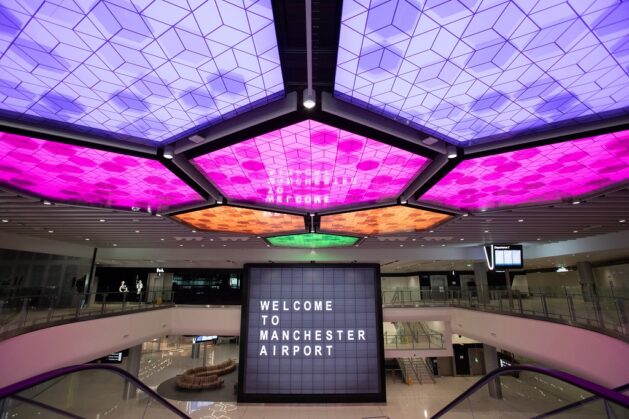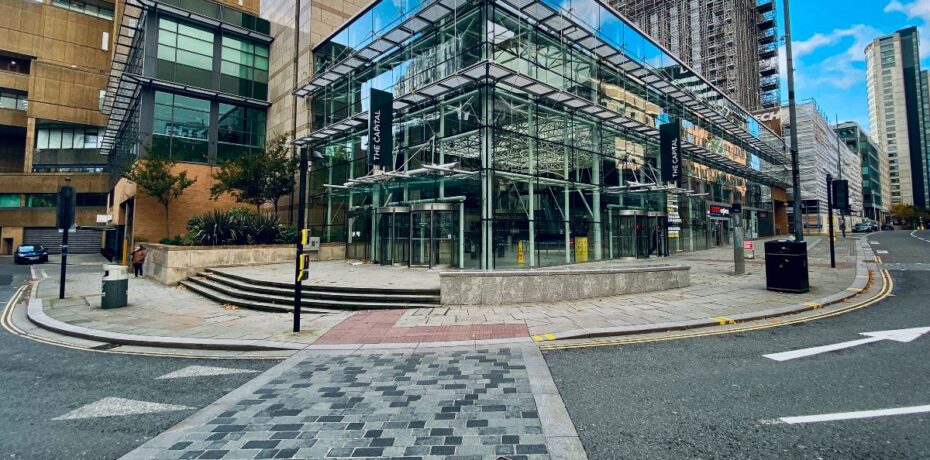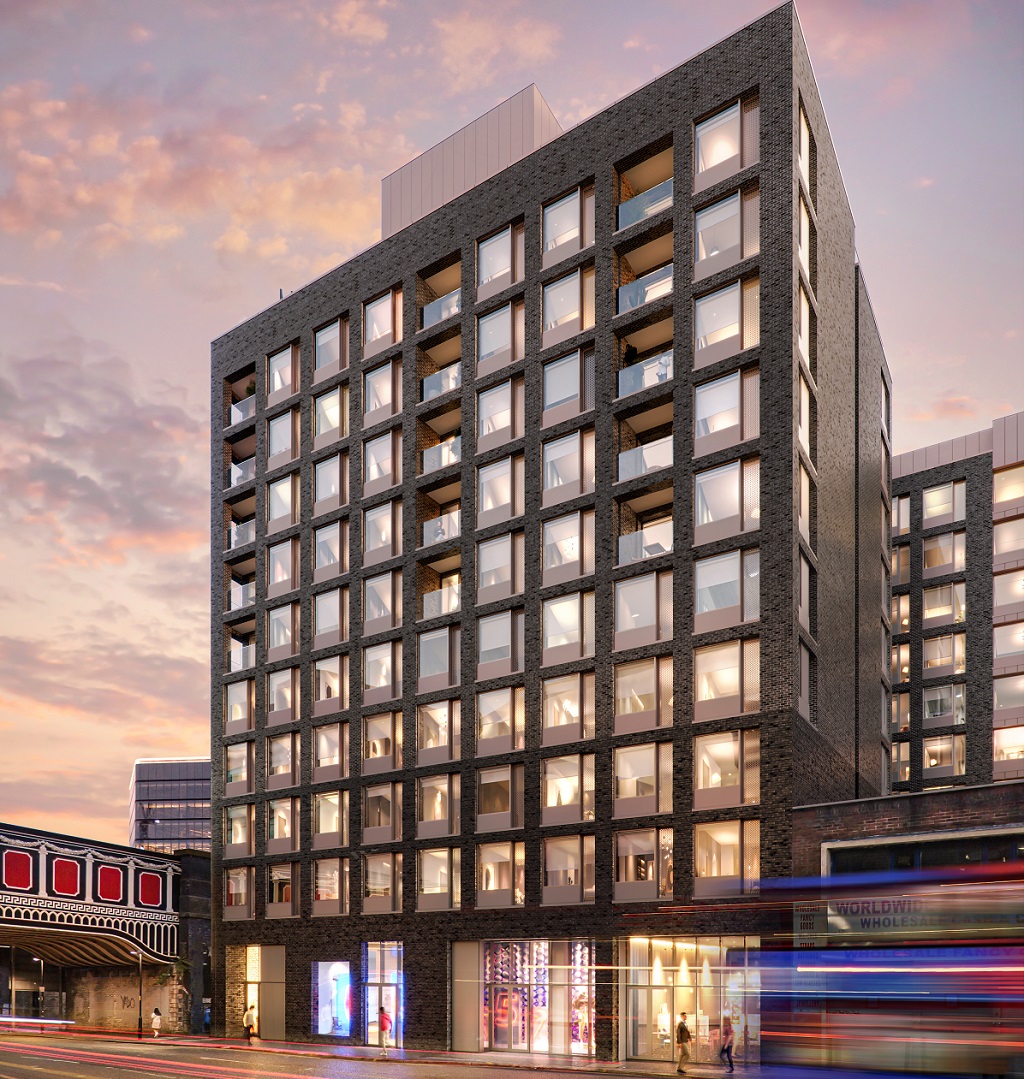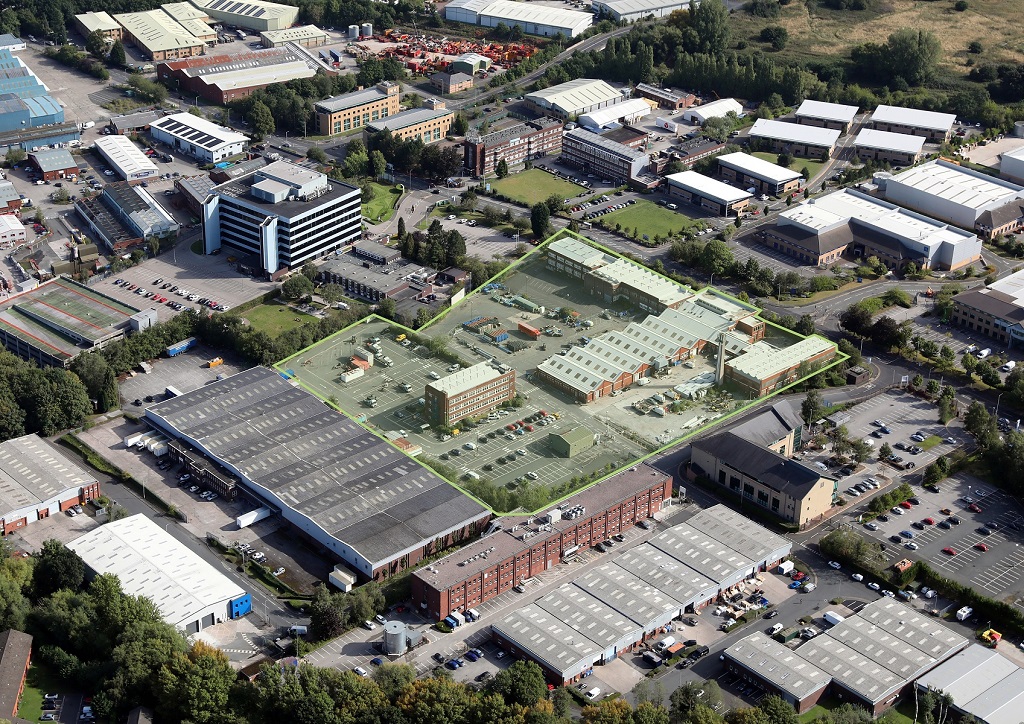The Subplot
The Subplot | THG Asap, lockdown warning, Mersey money
Welcome to The Subplot, your regular slice of commentary on the North West business and property market from Place North West.
THIS WEEK
- THG ASAP? What’s the future for the 5m sq ft Airport City development as potential anchor tenants THG release a trading update this morning
- Mersey wave: the global tide of property investment reaches Liverpool and Birkenhead
- Working from home: the elephant in the room

FLYING HIGH
 THG ASAP?
THG ASAP?
Rumour says THG’s plans for a 1m sq ft campus at Manchester’s Airport City could start on site in the first half of 2022. The beauty retailer is expected to issue a Q3 trading update today, perhaps with confirmation. What’s going on?
In the last year, high-flying Manchester Airport and THG have both come down to earth with a bump. Their change of fortunes raises questions about the future of the 5m sq ft Airport City scheme where THG’s plans a 1m sq ft HQ campus. THG’s Q3 trading update is expected today and it could be significant – it ought to appear on this link. What we know already is that much has changed at Airport City, which, since last summer, is effectively under the control of Columbia Threadneedle after a £400m plus deal with Manchester Airport Group (MAG).
News today?
This morning’s THG trading update may explain more, but the immediate background is that THG has had a torrid time with the stock market, and that Airport City has changed ownership. Last week a disastrous THG investor presentation backfired, resulting in a sudden 33% plunge in share prices. The share price has been heading down since the 500p at flotation last year. It’s now around 280p. A massive drop in market capitalisation has all kinds of consequences, including perhaps for large leasehold commitments?
The airport mega-deal
So, a recap: Airport City is South Manchester’s commercial flagship development. Launched in 2012, with a formal development partnership agreed in 2014, the original promise was for a £1bn development amounting to 5m sq ft over 10-15 years. Pick whatever start date you like, but we are now at least halfway through that project and much has been delivered, particularly in the logistics sector. But one large element, the 16.8-acre THG campus, seems to have made slower progress.
How it started
The last substantive announcement was in February 2020. “The Hut Group (THG) and Airport City Manchester have exchanged contracts to develop ‘THQ’,” a company announcement said. The first phase is a 288,000 sq ft office, which the statement said would be ready for 2022, with growth to 1m sq ft in further phases. It was the first office space deal at Airport City. This is not to be confused with the 168,000 sq ft warehouse and 104,000 sq ft of offices at the ICON logistics scheme, or existing THG offices at the airport’s Voyager and 4M buildings.
How it’s going
Rumour says a start on site in early 2022 is now envisaged. “Progress is continuing and we will be in touch when the next update on the project is due,” THG told Subplot. “We have actually just recently moved into our new ICON campus, which together with our new THG Studios is a new landmark for THG.” The beauty giant has taken ICON 1 on a 25-year lease from September 2020, at rents of £24/sq ft for offices and £7/sq ft for warehouse elements. They also have 459,000 sq ft at ICON 2 and 141,000 sq ft at ICON 3, on slightly lower rents, according to the IPO prospectus.
The deal was?
Everything depends on what THG and Airport City have agreed, and what kind of liabilities THG has acquired. Attempting to track it via regulatory announcements doesn’t reveal anything (unless today’s update changes the picture). According to THG’s website, phases two to four are subject to an option agreement only, and this was also the wording used in the original 2018 announcement, but the February 2020 announcement referred instead to THG having “also contracted for another two phases to facilitate THG’s future growth plans to expand the campus to c. 1,000,000 sq ft,” which might mean something different. Other accounts, like this from the MAG website, had a different take: “Airport City Manchester’s joint venture partners will act on behalf of THG as the project’s developer,” which implies something else. Neither regulatory announcements (so far), nor IPO paperwork show clearly what liabilities or commitments THG has for later phases of the 1m sq ft campus.
But who pays?
Not the airport, probably. The pandemic hit revenues like a flock of pigeons hitting a jet engine. Passenger numbers are creeping back up, and the climb back will be massive: Manchester year-to-date passenger total to September was 3.8m, compared to 12.5m the year before. That hurts. Earlier this summer, it was reported that MAG sought approval to waive any breach of covenants on the group’s £1.96bn bonds and rolling credit facility, and in summer 2020 sold the bulk of its stake in Airport City, together with non-core assets, to Columbia Threadneedle for £413m net.
The new boss
The result is that MAG is no longer the controlling party at Airport City. Companies House paperwork shows that in October 2020 MAG’s stake in Airport City shrunk from 69.9% to 19.9% and Columbia Threadneedle’s rose to 49.9%. BCEGI had 19.9% from the start, and Greater Manchester Pension Fund 9.9%. In other words, this project is now Columbia Threadneedle’s baby.
The new boss says
Columbia Threadneedle is adopting a dynamic approach, so far as we can see. It is already making good use of other parts of its MAG buy. The investor and asset manager plans to build either a single 103,000 shed, or three units totalling 85,000 sq ft on the former SkyChefs unit on a site within the World Freight Terminal, as Place North West reported. Subplot asked Columbia Threadneedle what its plans were for Airport City and for the THG campus but it chose to keep its own counsel.
Meantime, hotels
The existing Airport City partnership has been busy. Construction topped out in May on a 280-bedroom Holiday Inn and 262-bedroom Ibis Budget. Full completion is due next year. This is the start for a hotel district intended to deliver 2,400 new hotel rooms, though it’s hard to see that plan surviving the pandemic and a massive bounce back in passenger numbers. The airport itself has also pressed on, completing the 870,000 sq ft Terminal Two, a project delayed by the pandemic.
Conclusion: if the 2022 rumours are right the THG plan could provide Airport City’s new leadership with a good opportunity for a post-pandemic re-launch.
DRIVING THE WEEK
Money across the Mersey
The global wave of property investment has reached Merseyside, with a potential IPO for Liverpool’s Capital Building (pictured, courtesy of Starwood) and, separately, Canada Life funding a £75m Birkenhead office scheme. Is this the tipping point?
Soon everyone can satisfy their desire to own a slice of Liverpool’s office market. Trinistar Liverpool, a controlled affiliate of Miami-based investor Starwood Capital Group, is to explore a potential listing for a newly formed single asset company which will own the 425,000 sq ft Capital Building, Old Hall Street, Liverpool, via an initial public offering on the International Property Securities Exchange (IPSX). The decision was taken alongside Trinity Investment Management, a minority owner and manager of the company.
You want some?
The Capital Building is 82% let with a weighted average unexpired lease term of 22 years (based on space currently let) to five tenants, including a Government-backed entity and a global insurer. The IPSX market is still a novelty, one intended to allow mid-size private investors to take a share in (and trade shares in) named chunks of real estate. The one big listing so far – the Mailbox in Birmingham – had an on-off launch but has landed in a good place. It is an experiment in liquidity that could prove ground-breaking if the £80m plus flotation generates a positive vibe.
Shows us your workings
The value of the IPO placing? CBRE is quoting Capital Building rents of £20/sq ft but if we assume the average is a conservative £15/sq ft, then the rent roll is £5.2m and the capital value £80m plus. These numbers both come out a lot (lot) bigger if you tinker with your variables, not least rent, voids and the yield (assumed to be 6.25%). A further 15,000 square feet of new space, including a new three-level atrium, is currently being created which will provide a number of further amenities including break-out spaces, an arrival reception, social spaces, a café, collaborative workspaces and a modern wellbeing space. The prospects for rental growth are good, which is probably why Trinity intends to retain its minority stake in the building and will continue to be engaged as the manager.
More of this
Liverpool lends itself rather well to the new IPSX market’s needs. Its buildings are big, with diverse tenant lists with a heavy public sector bias, and values come out just nicely in the £50m-£100m category – the Goldilocks zone which is neither too hot nor too cold. The same applies to yields, which these days feel quite rewarding. All parties will recall, and be encouraged by, the 2019 sale of Exchange Flags by Shelborn Asset Management to Ashtrom Properties for a price of approximately £68m, reflecting a net initial yield of 7.65%.
Wirral’s wealth
On the other side of the water, Canada Life Asset Management has agreed to forward fund the £75m start of the Wirral Growth Company’s speculative office development at Birkenhead. Two blocks totalling 150,000 sq ft are the beginning of a £1bn town centre revamp led by Muse Developments and Wirral Council. Hotels, homes and a new market on the former House of Fraser site will follow. This is a massive coup for Birkenhead.
Nice feelings
Action in the Merseyside logistics sector was always good, retail investment is picking up (see the AnaCap Financial Partners/Rivington purchase of the St John’s Centre), and now offices join the party. Two crackers do not make a Christmas, and drawing conclusions at this stage would be unwise. But it begins to look like the tide of money rinsing international real estate has now begun to cause a few interesting damp patches in Merseyside’s office sector.
IN CASE YOU MISSED IT…
 Prêt à sauter?
Prêt à sauter?
Real time data sets – including weekly sales at Manchester’s Pret a Manger outlets – suggest city centres are finally back after a year of working from home. Office market data suggests a big leap forward in 2022, but only if the government doesn’t jump first.
City centre numbers are beginning to look good. According to an Office for National Statistics summary in the week ending 7 October 2021, transactions at Pret a Manger stores (not including stations and airports) were growing faster in Manchester (113% of pre-pandemic sales) than in central London (sales are 102% of their pre-pandemic levels). There are just 13 Prets in the Manchester sample, compared to several hundred in London. But it is interesting all the same. Manchester also did better than central London on vehicle traffic. In the week ending 10 October 2021, the seasonally adjusted average count of traffic camera activity for cars in London was up 3% on the previous week, and up 6% in Manchester.
Seven digit numbers
Central Manchester office take-up is also looking good. City centre transactions reached 257,000 sq ft in Q3 2021, a year-to-date total of 712,000 sq ft, according to the latest take-up figures from the Manchester Office Agents Forum. This compares with 295,000 sq ft in Q3, and 1.1m sq ft in the year-to-date in 2019, and suggests a rapid leap back from the horrors of 2020 when work-from-home orders did much to undermine office values and expectations.
Them down there
Comparisons with Birmingham are always instructive. Office take-up in Q3 2021 in the central Birmingham office market totalled 243,000 sq ft, so roughly the same as central Manchester’s, suggesting that after a sluggish start from a lower base, Birmingham may be bouncing back a little faster. There’s a couple of large six-figure deals about to complete which add to the impression of Midlands momentum. But don’t have nightmares: Birmingham’s market is not a threat. Year-to-date Birmingham’s total is 496,000 sq ft, down on the 675,000 sq ft in the first nine months of 2019 and, however you cut it, a lot smaller than Manchester’s.
Elephant in the room
The region’s business leaders seriously hope ministers aren’t panicked into opting for the leap in the dark which would be another winter work-from-home order. Economies can recover once, but ask them to do it again and you take a massive jump into the unknown.
The Subplot is brought to you in association with Cratus and Oppidan Life.





